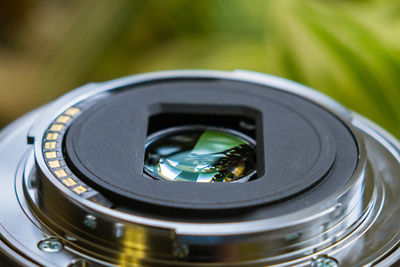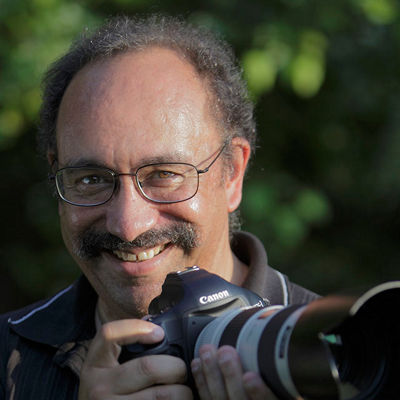What Lens Do I Need?
With a calculator and perhaps a pencil and paper, it’s relatively simple to figure out what specific lens a photographer or videographer may need to capture a particular subject, as long as you know the size of the subject, and the approximate distance the lens will be from that subject. Of course, users more familiar with the metric system — meters, kilometers, etc. — will have an easier time doing these conversions, to and from millimeters. For the rest of this document, assume we’re speaking to photo and video users more familiar with feet, inches and miles.
In fact, with a little math, you can answer the following questions:
- What lens do I need?
- What distance can I be from a subject?
- How large will a subject appear on my actual digital image?
- How large was that subject in a particular picture?
A Few Numbers You’ll Need to Know
Since lens focal lengths are nearly always stated in millimeters, it’s far easier to do the conversions with all measurements that way, and then convert back to feet and inches (or miles, etc.) after you’ve done your calculations. Naturally, precise millimeter values can be rounded-off for larger units, such as yards or miles.
Basic Millimeter Conversions:
1 inch = 25.4mm
1 foot = 304.8mm
1 yard = 914.4mm
10 feet = 3,048mm
100 feet = 30,480mm
1 mile = 1,609,344mm
Image Sensor Sizes:
APS-C — 22.5 x 15mm
Super 35 (video) — 26.2 x 13.8mm
Full-frame — 36 x 24mm
1.4-inch — 18.4 x 12.3mm
1-inch — 12.8 x 9.6mm
Terms You’ll Need to Know
It’s helpful to know and define a few basic terms:
- Focal length
The actual optical focal length of the lens in use, whether you already know it, or are calculating it. Always expressed in millimeters, and “lens conversion factor” is not applied. It’s always the marked focal length of the lens.
- Object size
The actual size of a subject you’re recording, temporarily converted to millimeters, for our purposes.
- Image size
The size (height or width) of your primary subject, on the actual image sensor. Example — with a full-frame camera (sensor size 24x36mm), held horizontally, if you posed a six foot tall person so that they filled the frame, top to bottom, so that they were touching the top and bottom of the frame, your image size of that subject would be 24mm. Realistically speaking, we usually want to put at least 2 or 3mm of space above and below a subject, to avoid the illusion of cutting the subject off at the top or bottom.
- Distance
The lens-to-subject distance, again converted to millimeters for our calculations. It can be converted back to more conventional units, like feet or even miles, afterward.
Answering the Questions with a Formula
What Lens Do I Need?
Focal Length = |
Image Size x Distance |
Here’s an easy example: you’re shooting batters at a baseball game, from a photographers area that you’ve found out is 120 feet from home plate. Your average batter is about 6 feet 2 inches tall (1,880mm, rounded off). With a full-frame camera, held vertically (think of a magazine cover shot), there’s 36mm of total sensor space... the actual desired image size would be more like 30–32mm, to allow a bit of space above and below the subject. What lens do you need to take a frame-filling, full-length vertical shot?
Focal Length = |
32mm x 120 feet |
Focal Length = |
32mm x 36,576mm |
Focal Length = |
1,170,432mm |
622mm = |
1,170,432mm |
So in this particular example, you’d need about a 600mm lens to get a tight, vertical shot from that position 120 feet from the actual subject. And, you can apply this to almost any situation where you know the approximate actual size of your subject, and a rough idea of the distance you’ll be from the subject (you’ll need to temporarily convert both to mm).
Another example — we won’t do the math here — you know you have to put a lightweight, APS-C sensor camera into a drone, and photograph a house and property in a horizontal shot. The property measures about 250 feet, side-to-side, and you know the drone is limited to flying 150 feet up. With the formula above, you can once again calculate the lens needed to fill the frame, side-to-side, on the APS-C size sensor with that property — from that drone’s maximum height.
For video users, whether you’re recording conventional “landscape”/horizontal video, or alternatively vertical video, the same information can be calculated, using the image sensor dimensions of your camera.
Of course, when converting to millimeters, you can typically round-off the actual mm numbers, especially with larger subjects like that 6 foot baseball player we just gave the example of.
In the next section, we’ll provide the equations to answer similar questions, which may arise from photographers, videographers and photo organizations.
The Remaining Questions You Can Answer
As long as you know some of the information (what lens you may already be planning to use, subject size, and so on), you can answer a number of imaging questions.
How Big Will the Subject be in the Frame?
You may know the gear you’re using, your subject, and approximately how far away you’ll be when it’s photographed or recorded. But how much of the frame will you fill with it?
Image Size = |
Focal Length x Object Size |
How Far Away Was the Subject?
If you have an existing picture or video file, and you know the camera it was shot with, the lens used, and the approximate size of the subject, you can calculate approximately how far away it was.
Distance = |
Focal Length x Object Size |
What Was the Subject’s Actual Size?
With an existing still image or video file, you may want to know the approximate actual size of a subject. If you know the camera (sensor size), the lens, and approximate distance from lens to subject, you can get an approximate idea of the subject’s actual size.
Object Size = |
Image Size x Distance |
One final note: easiest way to convert large millimeter numbers back to feet or inches: divide the mm by 304.8 (for number of feet), or by 25.4 (for number of inches). If you’re working with really large measurements, remember that 1 mile = 5,280 feet.




